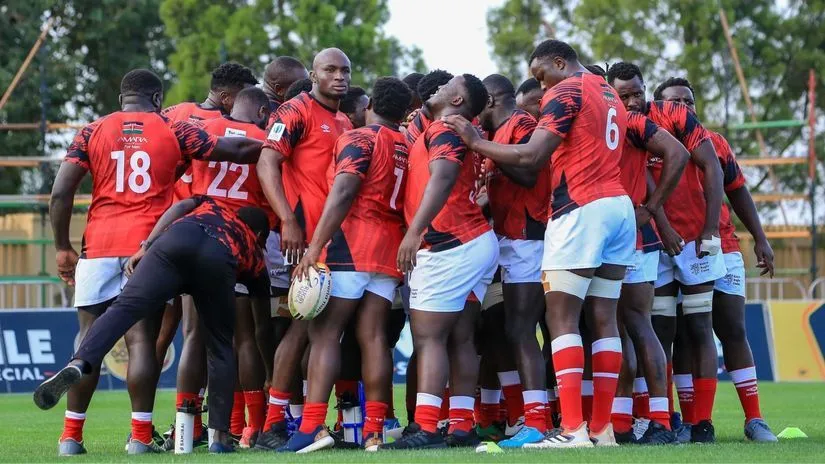The Rugby Africa Cup 2025 clash pitting Kenya Simbas and Zimbabwe will long be remembered as one of those pivotal days when hope, passion and sporting dreams were at their most intense. For the Simbas, the semifinal was not just another fixture. It was an opportunity, an odyssey with the 2027 Rugby World Cup as a tantalizing destination. Yet, as the full-time whistle cut through the air at Namboole grounds in Kampala, it was the Zimbabwe Sables who emerged victorious, extinguishing Kenya’s bright ambitions with a 29-23 win that stung not just the players but an entire nation of supporters.
Kenya’s long road to the semifinal
Pressure and expectation came pre-built into the story of the Simbas’ journey to this crucial encounter. Their campaign began with a tightly fought quarterfinal against hosts Uganda. The combative mood in Kampala’s Namboole Stadium was unmistakable. For nearly 80 minutes, every collision, every yard gained or lost, seemed to echo the yearning of fans desperate for Rugby World Cup qualification. The strategy paid dividends early. A swift Kenyan start saw Edward Mwaura and Barry Young touch down, while Griffin Chao and the heavy pack laid the foundation for a 32-24 triumph over the Rugby Cranes.
The result put the Simbas just 160 minutes from a maiden Rugby World Cup appearance. Their tactical discipline, exemplified by the powerful scrum and shrewd substitutions, promised that this group could be the one to break the persistent cycle of near misses. After all, the African rugby narrative has largely belonged to Namibia and Zimbabwe, with Kenya always the next-in-line, the perennial challenger waiting for the breakthrough.
Setting the scene in Kampala
On semifinal day, the Namboole grounds buzzed with hope and trepidation. Kenya, buoyed by the gritty win over Uganda, stood face-to-face with Zimbabwe. Only Namibia or Algeria awaited in the final, but more importantly, a win meant a direct spot at the 2027 World Cup in Australia. The stakes could not have been higher. A loss, meanwhile, threatened to once again reduce Kenya’s ambitions to the mathematics and uncertainties of repechage routes.
The script began with the Sables striking first, but Kenya replied through Eugene Sifuna, quickly levelling the scores at 5-5. When Zimbabwe found themselves ahead by way of a penalty, Kenya’s discipline faltered. The sinbinning of Griffin Chao for a rough tackle left them exposed, putting them on the back foot against an increasingly aggressive Sables attack.
| CASINO | BONUS | INFO | RATING | |
|---|---|---|---|---|
|
bonus
Sign up for KES 46 bonus after first deposit!
See 11 Bonuses
|
info
20+ crash & instant games, Aviator bonuses BK 0000704 |
|||
|
bonus
Refer friends, win cash prizes!
|
info
BK 0000672 PG 0000412 Mobile-friendly |
|||
|
bonus
Get 200% deposit bonus + 200 free spins on Veni Vidi Vici!
See 6 Bonuses
|
info
BK 0000562 PG 0000350 Large game selection, attractive bonuses, and top-notch security |
|||
|
bonus
100% bonus up to 15000 KSH on first deposit!
See 9 Bonuses
|
info
BK 0000698 PG 0000424 Excellent customer support, large selection of slot games, and multilingual website. |
Halftime hope and the harrow of small margins
Despite the setback, the Simbas refused to fade. Jone Kubu’s accurate kicking kept them close — at 13-11 with the half ebbing, Kenya set the stage for a dramatic momentum shift. Chao, eager to make amends, slipped into open space and scored, Kubu adding the extras, to give Kenya an 18-13 halftime lead. For a brief, heady while, history beckoned.
This was a team feeding off hunger but also the bitterness of years past. Their defensive shape held, their decision-making crisp. The Kenyan bench, watching anxiously, must have believed the hour had finally arrived.
The Zimbabwe resurgence and Kenya’s heartbreak
Yet, matches like these are decided not just by skill or ambition, but by composure under pressure – and that is where Zimbabwe found their edge. As the second half wore on, Sables skipper Hilton Mudariki and fly-half Ian Prior began to dictate play. The telling moment came when Kenya, deep in their own territory, faltered. Bethuel Anami lost control in the maul, Zimbabwe pounced, and Prior converted for a 20-18 lead.
The spiral was difficult to arrest. Prior, growing in confidence, executed a crucial drop goal, pushing the Sables out of immediate reach at 23-18. Kenya’s game, so often defined by aggressive ball-carrying and tactical kicking, began to unravel. Handling errors crept in just when calm heads and secure hands were needed most.
Prior, seizing the moment, slotted two more penalties. Time was now the enemy, and although Teddy Akala crossed the whitewash late in the day, it proved only a consolation. As the referee’s whistle brought proceedings to a close, the Kenyan players sank to their knees, while the Sables erupted in a cathartic release.
Lessons in the details: missed chances and critical errors
Post-match, the mood in the Simbas camp was one of collective heartbreak. This was, in every sense, an opportunity lost. The statistics will show an even contest for long stretches, but every supporter and player knows that tournaments at this level are ultimately defined by the tiniest of margins. Sinbins, dropped balls, missed passes — each one adding up to a painful lesson learned on the harshest of rugby’s stages.
Kenya’s Achilles’ heel has often been moments of indiscipline or concentration lapses. This match offered both a brutal reminder and a possible blueprint for future improvement. As for Zimbabwe, their patient build-up and sharp capitalization on error were a masterclass in knockout rugby, ending the match with a late surge in both points and morale.
Africa’s rugby hierarchy—shifting tides?
The grandeur of African rugby is rooted in its rivalries and its ability to surprise. Namibia, Zimbabwe, Kenya, and Algeria had all swept aside their quarterfinal opposition with authority. But this Zimbabwe victory was also a reminder that the Rugby Africa Cup is no predictable procession. The Sables now face Namibia for a direct ticket to Australia, with the losers set for a second-chance repechage against Asian opposition.
For Kenya, the path to the World Cup is now strewn with what-ifs and if-onlys. No amount of tactical planning can erase the pain of a dream cut tantalizingly short, but the resolve to rebuild is the heartbeat of sport. The Simbas’ journey, punctuated by skill, resilience and heartbreak, remains a compelling story — both for supporters who have lived through every kick and pass, and for newcomers drawn by the drama of Africa’s rugby renaissance.
The enduring legacy and what comes next
There are lessons here that stretch beyond the scoreboard. The Simbas’ run to the semifinal was built on moments of inspiration, forged in the heat of high-stakes rugby. For the players and coaches, it is back to the drawing board. Fresh strategies, harder training, and perhaps a touch more ruthlessness will be needed if Kenya is to finally break the glass ceiling in future campaigns.
For Zimbabwe, the final against Namibia is a shot at rugby history, and for all of Africa, these matches remain proof of the continent’s growing rugby pedigree. The heartbreak of defeat is a harsh teacher, but for the Simbas and their legion of supporters, it is also a clarion call to redouble their quest for greatness.
Sport, after all, is nothing without the undying hope of what tomorrow will bring. And in African rugby, the story is far from over.










